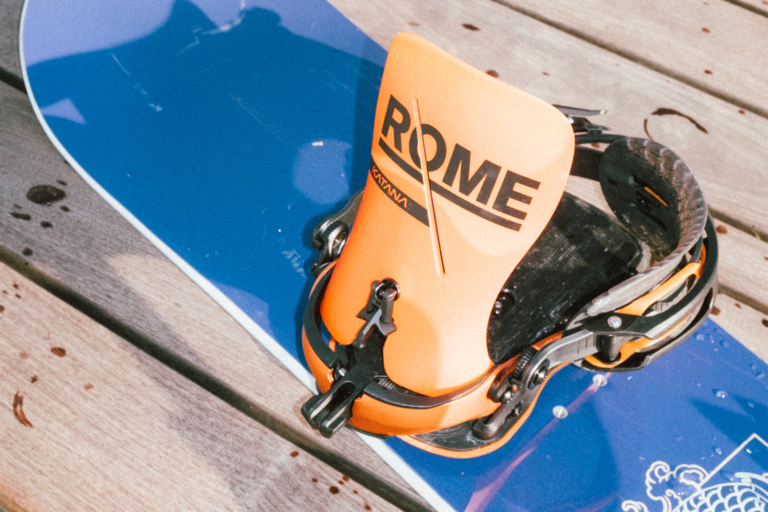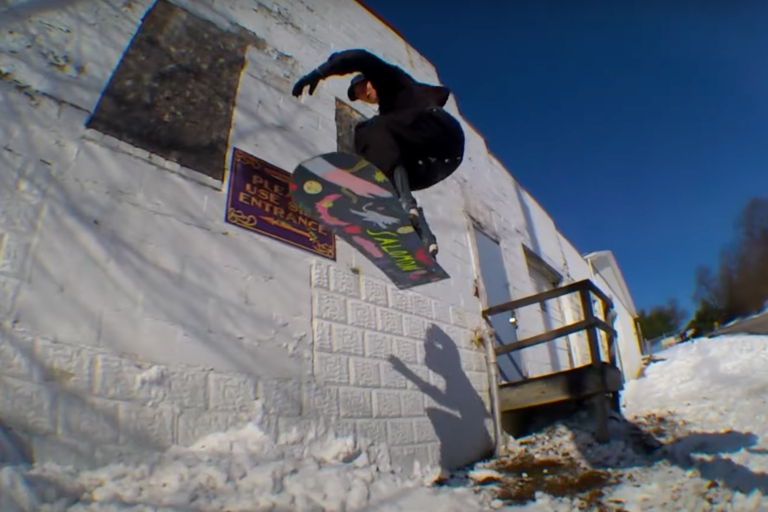Of course these operators are trying to reduce their energy use, imporve their grooming efficiency, reduce their carbon footprints, recycle more, reduce their water use and improve their infrastructure because it saves them money. What better incentive than cash to jump-start a business into becoming more sustainable. However, if climate continues to change, will these actions be enough to stay in business forever? Brent Giles, Chief Sustainability Officer at Powdr Corp. points out that even with all these green measures there is no guarantee: “You can look at your carbon footprint and it can vary by a thousand tons for an individual ski area at any given year depending on if it snows or not! We can reduce our carbon footprint substantially, we would just need to stop making snow.”
Auri Anthamatten, Aletsch Arena, Switzerland. Photo: Silvano ZeiterSo why are we making snow? We are making snow so we can guarantee a consistent season and so we can build the terrain parks and halfpipes. But snowmaking is not the culprit here, it is a bandage to a larger concern — climate. If we didn’t make snow, the mounatins may not truly open until after Christmas. The energy consumption is the concern with snowmaking, not the water use. Think of the man-made snow as water storage. It almost all returns to the waterways when it melts. Climate is weather or an extended period of time, while the environment is a more tangible substance. “The way I look at it,” states Giles, “is that without the environment, everything collapses.”
The environment is an ecosystem. Ecosystems contain biodiversity. Biodiversity is the variety of life — also known as a community. So the environment in that reference here contains the climate and the community. “You have to bring everything full circle,” states Ray Weller, Environmental Manager for Breckenridge Ski Resort. “It is not just waster reduction, or energy reduction. It is being part of the community.” These monsters we call operators are actually doing exactly what we are telling them to. We are telling them we want more lodging, we are telling them we want more terrain and we are telling them we want more parks. Whether it is for our own enjoyment or growing demand, we call the shots.
Even with these businesses competing against each other, they all have the same objective: to stay in business. The only way to stay in the game is to protect the environment. To do that, these operators must share the same intentions with their customers. As Ray Weller puts it, “You are co-owners in our vision towards sustainability.” The vision isn’t us versus the resorts, but it is us with the resorts. “Raising the consciousness of our guests while they are here and then hopefully inspiring them to make changes when they go back home would be our ultimate goal,” says Weller. That means this vision involves the operators, the locals and the tourists — all the stockholders and the stakeholders. Because whether it is tomorrow, ten years, or a hundred years from now, we wish to see the mountains in the same shape, if not better. But an ever-changing climate may have different plans.
None of this will happen if we cannot come together. It is more than frustrating when we know the right thing to do and we do not do it because of political will or the bottom line or because we just don’t seem to care enough. “It has to be a priority,” as Brent Giles declares, “but it is not. It is a priority for all of us to talk about it and greenwash everyone, but it is not a priority to fund it and we need to do what is absolutely necessary. We caused it, we have to pay for it.” We know we cause the degradation and we know we have to protect it, but the problem is we need everyone to make the necessary changes and everyone isn’t. That means we need a unified message and stance to raise awareness and become the change. Auden Schendler expands on this necessity: “I would like to see the industry unite with a message on climate. And that means the trade groups start speaking with one voice.” To create one voice, these operators need our input and our feedback. If you like something, tell them, and vice versa. It can have a snowball effect on their actions and practices. The only chance we have is to work together to not only stay in business forever, but also to snowboard forever.
Subscribe to Snowboard Magazine
Read also: Defining Sustainability – Riders







